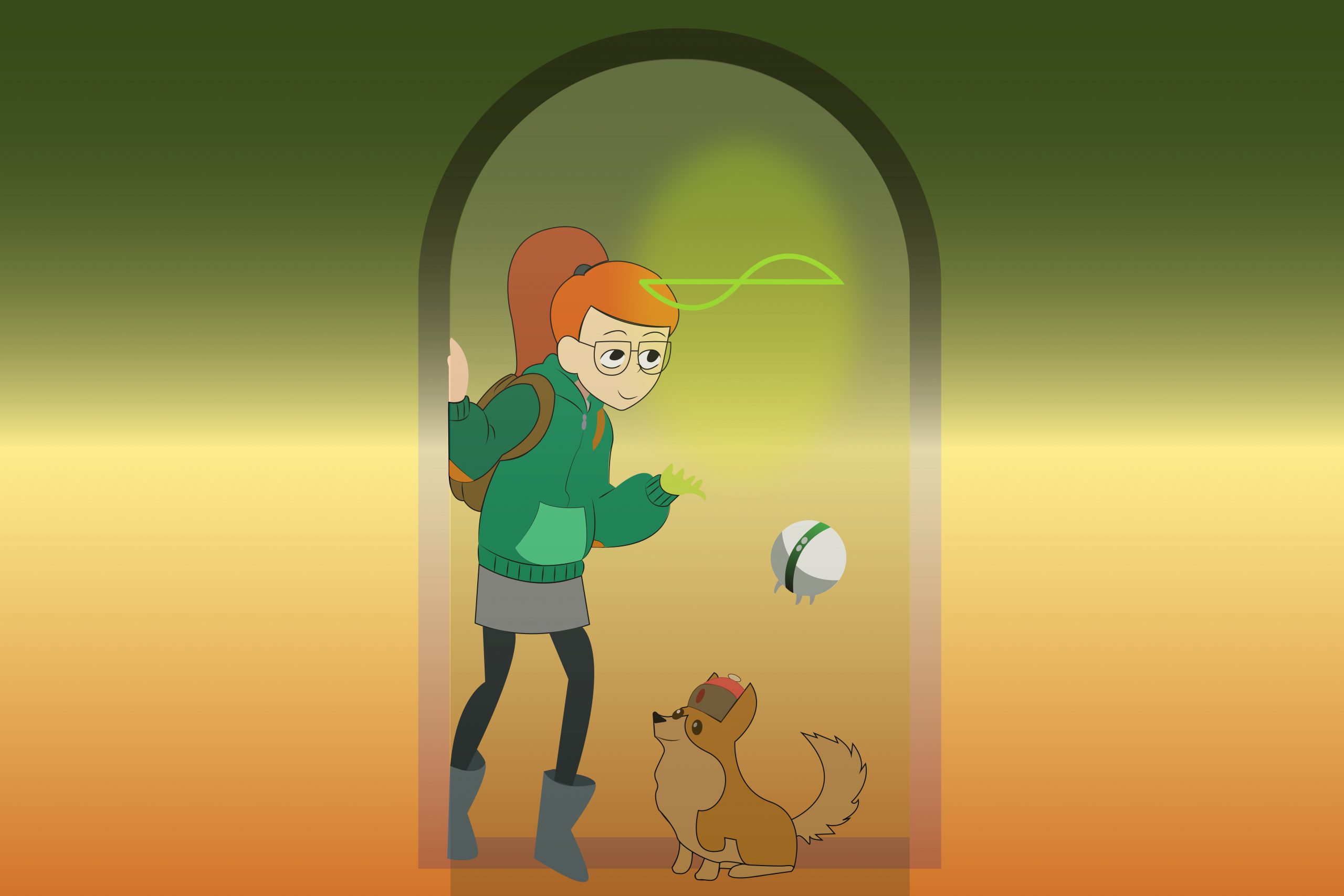Warning: Covers spoilers for all seasons of “Infinity Train”
Tulip Olsen, the main protagonist in Season 1 of “Infinity Train,” is living every kid’s worst nightmare: Her parents are separating. The fragile balance the tween has built now begins to collapse. How is a young girl supposed to deal with such mature ideas, the notion that love can die? She flees her home in the first episode. Amid Tulip’s frustration, a mysterious train comes to pick her up. It carries her on a tumultuous track, destination unknown. What lessons may await her?
Children’s animation is one of the most demanding fields in which to create art. After all, does a child even care about art? Is the entertainment they receive meant to provide just that, or perhaps achieve something greater? The show believes in the latter. Adolescent minds are the most vulnerable, with the seeds of values and beliefs easily planted or removed. The media they consume should ensure these seeds blossom correctly. “Infinity Train,” a Cartoon Network series currently available on HBO Max, is a gamechanger in its maturity. Its oddball visuals and characters allow children to explore and process dark subjects most other cartoons are unwilling to touch.
As stated, the first season of the series centers Tulip and her reckoning with divorce. The train’s primary purpose is to reform its passengers, like the protagonist. The passengers are equipped with numbers that tick down with each positive development on their part. When the number reaches zero, they are allowed to leave with many lessons learned. Tulip encounters zany side characters on her journey, who reside in cars unlimited in their novelty, including a corgi ruler of a corgi kingdom and a car run by talking turtles who live in homes without walls.
The first season’s humorous sensibilities combined with darker elements form the core of the show’s appeal. With Tulip visiting a new car or world in each episode, the structure yields straightforward, kid-friendly escapades. Kids feel comfortable within this world, as its lack of logic differentiates it from the depressing limits of the “adult” — the “adult” appreciates the world’s creativity, but children want to live in it. A child’s investment in the train’s fantasy surface allows their exposure to the train’s nuances.
The train is filled with dark parallels. Its wonderland is controlled by Amelia, a former passenger who usurped control from the previous conductor. This coup was the result of grief rather than formulaic villainy. She lost her husband and was brought aboard the train to process this loss, but instead lashed out and took control, trying to recreate the life she led before rather than move forward. Her journey is a dark mirror of Tulip’s, as both characters reckon with changes in their lives. The obstacles the protagonists face are not monsters from the closet but rather from the psyche. The whole adventure emerges from a widow’s anguish and a child’s helplessness.
The inclusion of Amelia in the narrative of “Infinity Train” allows a nuanced approach to Tulip’s journey. The first season’s moral of accepting divorce is conventional, with many forms of child media covering this topic to varying degrees of success. What distinguishes the moral in “Infinity Train” is its relative bleakness, exploring the damage that occurs when change is not accepted. Children relate to Tulip, yes, but they also see Amelia and her grief portrayed unfiltered. The children must choose who to imitate. Characters’ moral choices, good or bad, hold significant connotations in the subsequent seasons.
The second season of “Infinity Train” follows MT, Tulip’s literal reflection. In the previous installment, MT (or Mirror Tulip) escapes from a mirror dimension and explores the train to evade authorities and uncover their own identity. On their journey, MT encounters a new passenger, Jesse, and a magical deer whom they name Alan Dracula (the show’s bizarre charm remains consistent). Like Tulip before, the colorful and intense adventures of the duo lend clarity. However, MT’s clarity remains cloudy, as she is technically not a passenger but a train resident with the same autonomy as a game NPC.
MT’s search for identity expands on the moral of change in the previous season. Children’s identities are susceptible to any outside influence, like seeds not fully grown. Much like MT, they are a blank slate but equipped with a fierce independent streak. The protagonist and adolescents oppose authority out of frustration for something they cannot quite grasp. It is lonely and aggravating to not know who you are. The show seems to understand this. The season concludes happily yet again, with MT fleeing to the human world with Jesse and creating a new name, Lake. Lake now knows who they are and where they belong; it can be done after all.
Overall, the themes within the first two seasons of “Infinity Train” grow increasingly fresh and complex. The first season takes the traditional moral of contending with change and morphs it into a cautionary tale, while the second recounts a quest for identity within an oppressive system. Neither of these explorations is meant to “preach” but rather to teach authentically. This is because the setting of the train is a space built for children. It is appealing, and it uses that appeal to create complex truths for a child’s frame of mind. There are no adults, but there are talking animals. The human characters are down to earth, and they learn with the viewer. It is philosophical “Sesame Street.” Of course, like all youth media, any ambiguity gives way to a pleasant conclusion. There are some truths that children are never ready to face. Happy endings can be rare.
The third chapter of “Infinity Train” is a remarkably bleak piece of television, children’s or otherwise. While the previous stories recount characters trying to escape the train, the main cast here is trying to stay. Grace and Simon are leaders of The Apex, an insurgent group of passengers on the train who wreak havoc, trying to keep their scores as high as possible. They also boast a prejudice against “nulls,” or the residents of the train who assist the passengers, considering themselves “superior.”
Despite their hateful views, Grace and Simon warrant some empathy as these views arise from misinformation, familial neglect and fear — a deadly combination. When the duo encounters a mysterious girl, Hazel, their relationship faces a schism. Grace has a redemption arc, learning to respect the nulls and herself, realizing the way to escape is to do good (and get her number down). Simon remains firm in his beliefs; in fact, they only grow more extreme.
If this were any other cartoon, Simon, too, would be redeemed. It is a common trope in modern animation where a character learns and grows over time. Even “Infinity Train” adheres to these concepts, with Amelia making some amends for her previous misdeeds in the third season. These captivating arcs show child audiences it is not too late to change. However, Simon does not change. He commits murder, brutalizes his own best friend and transforms the Apex into a near-fascist regime (for kids). He is eventually killed in his lust for power and control.
The tragedy of Simon is a harsh lesson for kids. Sometimes, people cannot change, a truth that stands out among a premise that focuses upon people wanting to change. Sometimes they are cruel or entitled and give in to their rage. The best thing the viewer can do is carry on their journey and make their own amends, as Grace does in the series’s bittersweet conclusion when she reforms the Apex’s bigoted ways.
Some find “Infinity Train” too bleak for children to digest, but this viewpoint is what makes shows like it so vital. When the series was canceled after its fourth season this year, HBO Max argued that there was no child entry point. Life does not have an entry point. In an age of increasing grit and cynicism, what this generation faces proves more desensitizing than that of previous generations. They need a guide or exposure to essential truths to get by. It is a “tough love” approach, much like the titular vehicle and its traumatic abstract imagery.
Of course, there should always be room for fun, as the fourth and final season of “Infinity Train” proves. It takes a more optimistic approach, centering around two young men who reconcile their long-fractured relationship. It is the weakest of the show’s arcs, with many considering it a downgrade in storytelling.
However, the season’s relative immaturity can be considered effective. Just as children need exposure to harsh truths, they also need optimism if they are to inherit the world. While some people cannot change, other people can. The characters of the show are flawed, but they grow and the viewer with them. “Infinity Train” is an immersive work in this way. Like life, it provides the perfect balance. Zany talking animals co-exist with the darkest realities. People can be good where others are bad. For children, the show is an introduction to life. There are few works like it.

















